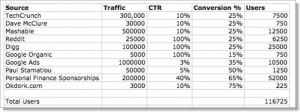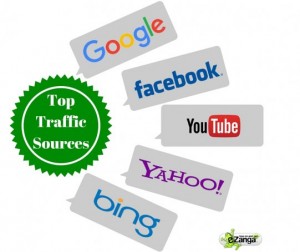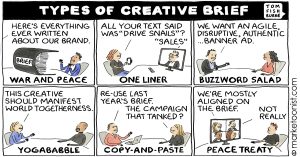
In an ideal world, everyone would love their job. You’d wake up, rub the sleep from your eyes, and you’d take in the light of the new day with optimism in your head and excitement in your heart. You’d feel inspired, energized, keen to see what challenges await. You wouldn’t be spending your days in some dead-end job, no sir, not tied to some mind-numbing, repetitive procedure you have to undertake over and over just to pay the bills. In an ideal world, you’d be doing something that you were truly passionate about. If you do what you love you’ll never work a day in your life, right? That’s the perfect, best case scenario, the ideal situation for your working life. A career in which your purpose in the world is clear. In an ideal world.
But, of course, we don’t live in an ideal world. In reality, very few of us are able to work in a situation that provides both job satisfaction and remuneration at an ideal level. The inescapable reality is that we all need to make money. While you might be your happiest when writing music and taking in the sunsets for inspiration, the reality is that very, very few people are ever in a position where they can prosper from such endeavors. So we compromise – we may not be as absolutely happy as we could possibly be, but we take on jobs that will take us, places where our skills fit. And those jobs are generally okay, they pay the bills, and we’re able to do what we want in our own time as a trade-off. But wouldn’t it be amazing if we could all be more affiliated with what it is we do? Even if it wasn’t the dream career, wouldn’t it be great to find your calling within your day-to-day grind?
A word of advice…
This is an element that makes me excited about the information age. As access to information becomes more democratized and more readily accessible, consumers, and the processes they undertake along the path to purchase, become infinitely more powerful. Thus, the impetus is on brands to change the way they think about marketing and move away from a traditional broadcast mentality.
The shift started with the introduction of the Internet, connecting people to information. Advances in mobile technology then expanded that capacity, giving people access to all that data immediately and all the time. Accessibility is the most significant consumer shift in a generation – fast-forward to now and no purchase decision ever need be made without some form of research or reference check informing that decision. The same progression is also evident in the way we use search engines – at first, search engines helped us locate relevant info as required. But then the databanks of the Internet expanded and search advanced beyond it’s ‘electronic Yellow Pages’ beginnings, evolving into the universal reference companion we all have access to today. Social media also came into that mix, giving us a whole new range of functionality – you could connect with friends, see what old friends were up to, post on your wall, customize your profile. Conversations started, relationships developed – habits became embedded.
These days, it’s common search behavior to utilize two concurrent streams of insight – informational via search engines, and personal via social. Search engine data provides you with what you need to know to make an informed decision, while social provides you with feedback from the people you know and trust. This is why Facebook’s latest search upgrade is so significant – if I’m shopping for, say, a new pair of basketball shoes and I find a pair I like online, I’ll probably scroll down to the user reviews and see what people have said. And those reviews are powerful – they’ve played a big part in Amazon’s ongoing success – but the on-page reviews could also have been submitted by anyone; the author might be an employee of the manufacturer, or of its direct competitor, in the case of a negative comment. But if I search for the name of those shoes on social and I see that my friend Paul has purchased a pair, his comments are going to have a much bigger impact on my decision-making process. I know Paul, I know how he plays, I trust what he has to say – his opinion will likely make or break that sale for me. If he says they’re great, it’s a done deal, but if he says ‘no good’, I’ll move on.
Social media, and now the introduction of advanced social search capabilities, has radically expanded the influence of word-of-mouth recommendation. In order to move with this trend, brands need to establish trust, they need presence on social platforms and advocates to ensure positive association and connection with those communities. And one of the best ways to fuel that trust is through employee advocacy, using the voices of the individuals who care the most about what you do. But that, of course, hinges on whether they actually do care in the first place.

A common Facebook users’ connections, charted by relationships – multiply this by every user, all inter-connected with one another, and the power of social search becomes clear (source: http://ow.ly/HuR7v)
Building a Culture of Passion
For this reason, employee advocacy is more important than ever in the information era – but you can’t just send out an e-mail asking staff to share your latest company news via their social profiles. We’ve seen that move attempted many times – an individual re-tweeting a company update verbatim or sending out a clearly pre-prepared message is not an advocacy program. Such acts only highlight how much your brand has missed the point – what you need is staff sharing info because they actually want to share it, because they care about the topics in discussion. Starting your advocacy program at the point of distribution is like starting a political campaign on the day of the election – unprepared, unengaging, and likely not very successful. The advocacy process needs to start much earlier on, way before the content calendar is settled and the purpose statement is locked-in. You need to build the roads, build the arterials and connectors through which your message will travel before that message is sent on its way. To truly succeed, you need to build a culture of passion within your business.
Now that might sound a bit ’new age,’ might seem like another buzzword strategy that’s both idealistic and unrealistic at the same time, but the idea behind this is to enable your staff to be involved whilst also showcasing their own professional expertise. An advocacy system that trains staff in how to parrot the company’s messages won’t permeate your culture in an authentic and engaging way – but giving staff reason as to why they should get involved – highlighting the benefits of building their personal brand through the reach of their online profiles – is significantly more likely to achieve a positive outcome. The strategy is to focus on the internal culture of the brand, engaging your target audience inside to better facilitate the spread of your message outside. It’s developing an understanding of the wider benefits of a social media presence not for the benefit of your business, but for the benefit of the individual – because as much as you need to share your brand message, there’s few things more engaging that showing people what’s in it for them.
The Key to Employee Advocacy – Empowerment
Human beings are driven by purpose. Providing a clear purpose and mission is the only way to get genuine emotional investment in what you do. Studies have shown that financial incentives don’t work, long-term – what people need is importance, relevance, a defined need for what they do. In order to build a culture of passion, you need to consider what role your company plays in the world – what was the driving ambition or passion that lead to the creation of the company in the first place? What is it your company does that can’t be done by anyone else? Then you need to share that, embed that mission into every role and every employee. Here are a few notes on ways to embed a passionate culture.
- Encourage your staff to utilize social as a means of building both your brand and theirs – give them reason to want to showcase their knowledge and be engaged in the wider business community. Yes, more people speaking on behalf of your brand also increases the chance of a slip-up, but by empowering your staff to become leaders in their field, to build their individual profiles, as opposed to being an extension of your brand voice, you’re also enabling them to better position themselves and enhance their professional standing – a win-win for both parties.
- Your advocacy program needs to start from entry level – just as you would build audience personas, it’s worth also considering staff personas, establishing solid understanding of the people you want in your team. Who are your most engaged staff? What are their key traits and experiences? What lead them to your company in the first place? Take down notes on each of your best people and find common trends and threads to look for in future hires. Get fellow employees to write down a list of five words they would use to describe those key employees and establish common words or themes to help build your perfect employee persona models.
- Consider internal meetings that cover off on key topics in the wider industry, not just internal company news. Information on key learnings and professional development opportunities will help empower your employees and build engagement in what you do. It’s one thing to push out a list of company values, it’s another to listen to your staff and build the workplace in which they want to work.
- And yes, at the end of the day, it is just a job. But the point in time where that becomes the pervading opinion throughout the office is the point at which you’ve lost your staff. Any job can be more than ‘just a job’. If people are spending their days working for you, they want it to be more, they want a purpose, a passion – there’s a reason they came to work for you in the first place, right? The key to building social advocates is empowering people to share because they want to. Because they’re connected to the wider goals of the business.
A Matter of Trust
A little while back I was watching a documentary about legendary British post-punk band Joy Division. Joy Division, for those unaware, were a four-piece group from Salford, England who became known for their intense sound and deep lyrics, sung in the unmistakable tones of their enigmatic frontman, Ian Curtis. In total, Joy Division only existed for four years, from 1976 to 1980 – their time was cut short by Curtis’ suicide on the eve of their first North American tour – their biggest yet. The band’s sudden rise had taken a toll on Curtis, for whom, suffering from severe epileptic episodes, and coupled with his own relationship concerns, it had all become too much.
At core of Joy Division’s story is the long-held ethos that Curtis held his art most dear. The band had been given opportunities to live their dreams, to have all they’d ever wanted and dreamed of, but Joy Division were determined to do things their own way. Money wasn’t their reason for existing, fame wasn’t – they did what they did because they loved doing it.
Right at the end of the documentary, they were playing clips of people connected to the band and one of them said this:
“We live in a time where brands are everything, but Joy Division were beyond all that, because you could simply trust what they were doing”
What a great quote. Branding is everything, brands are how we define our businesses and communicate with the outside world. But in the information age, trust is becoming more important. Big brands have trust, they’ve been at this for a long time and people know they can rely on those that have served them reliably for so long. But for other brands, trust is what they need, just as much as awareness, just as much as presence. Trust is at the heart of word-of-mouth. Passion, beyond individual gain, is what builds trust. And purpose, understanding the role your brand plays in the world and why that’s important, is what underlines that passion. Beyond slogans and statements and coffee cups and logos, passion is the fuel of great brands.
Your first target audience is always internal. Because if they don’t believe in what they’re doing, why would anyone else?
(278)










